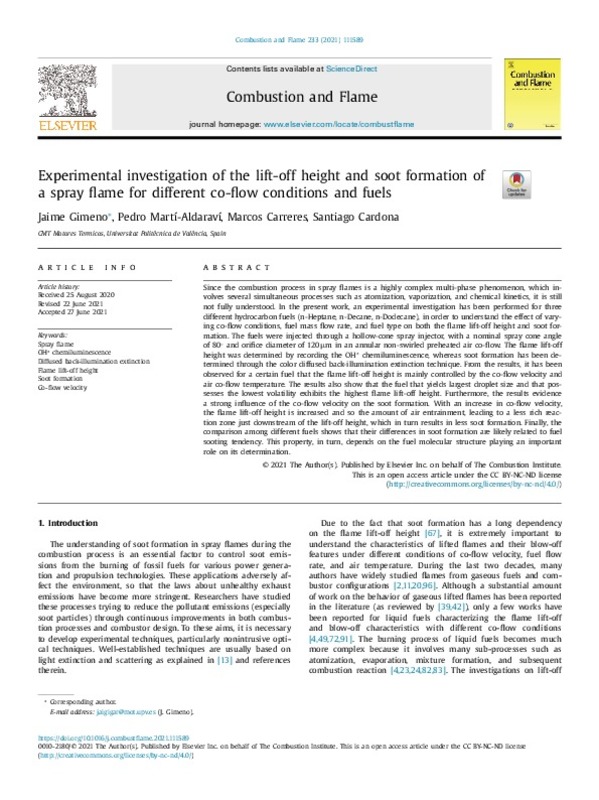JavaScript is disabled for your browser. Some features of this site may not work without it.
Buscar en RiuNet
Listar
Mi cuenta
Estadísticas
Ayuda RiuNet
Admin. UPV
Experimental investigation of the lift-offheight and soot formation of a spray flame for different co-flow conditions and fuels
Mostrar el registro completo del ítem
Gimeno, J.; Marti-Aldaravi, P.; Carreres, M.; Cardona-Vargas, S. (2021). Experimental investigation of the lift-offheight and soot formation of a spray flame for different co-flow conditions and fuels. Combustion and Flame. 233:1-19. https://doi.org/10.1016/j.combustflame.2021.111589
Por favor, use este identificador para citar o enlazar este ítem: http://hdl.handle.net/10251/182656
Ficheros en el ítem
Metadatos del ítem
| Título: | Experimental investigation of the lift-offheight and soot formation of a spray flame for different co-flow conditions and fuels | |
| Autor: | Cardona-Vargas, Santiago | |
| Entidad UPV: |
|
|
| Fecha difusión: |
|
|
| Resumen: |
[EN] Since the combustion process in spray flames is a highly complex multi-phase phenomenon, which involves several simultaneous processes such as atomization, vaporization, and chemical kinetics, it is still not fully ...[+]
|
|
| Palabras clave: |
|
|
| Derechos de uso: | Reconocimiento - No comercial - Sin obra derivada (by-nc-nd) | |
| Fuente: |
|
|
| DOI: |
|
|
| Editorial: |
|
|
| Versión del editor: | https://doi.org/10.1016/j.combustflame.2021.111589 | |
| Código del Proyecto: |
|
|
| Agradecimientos: |
This research was funded bythe Spanish Ministerio de Ciencias, Investigacion y Universidades through project RTI2018-099706-BI00. Part of the experimental hardware was purchased through funds obtained from Spanish Ministerio ...[+]
|
|
| Tipo: |
|









